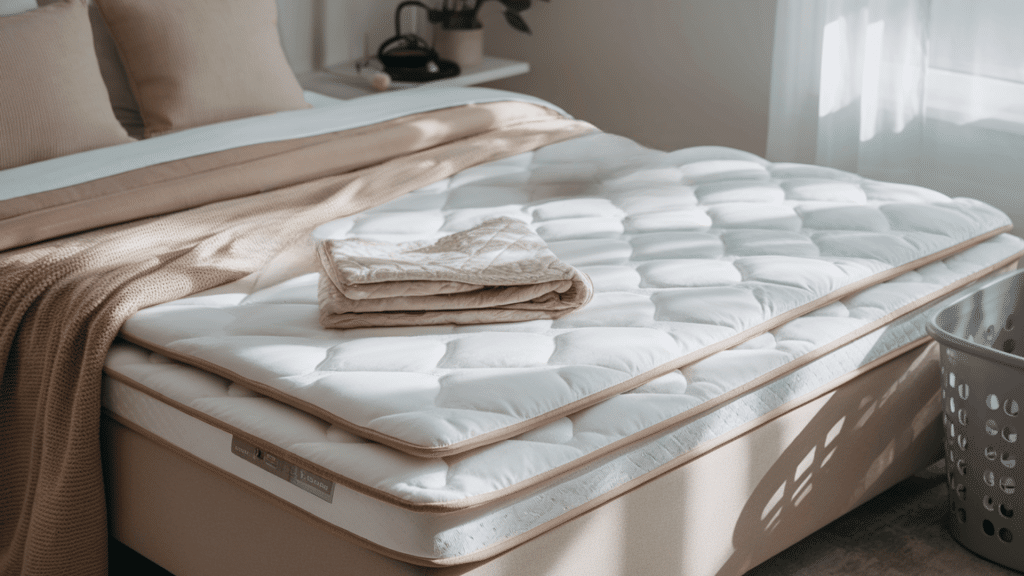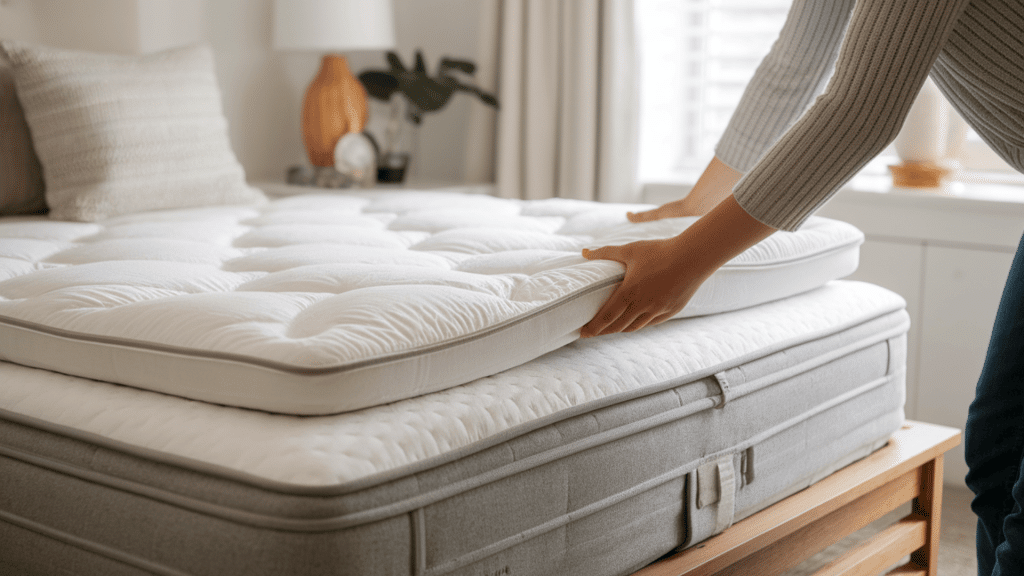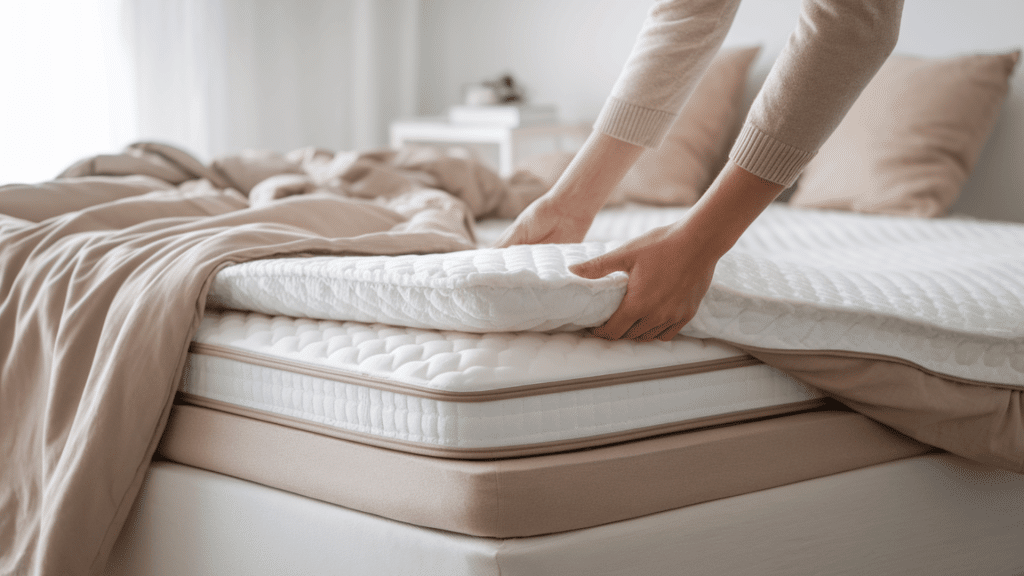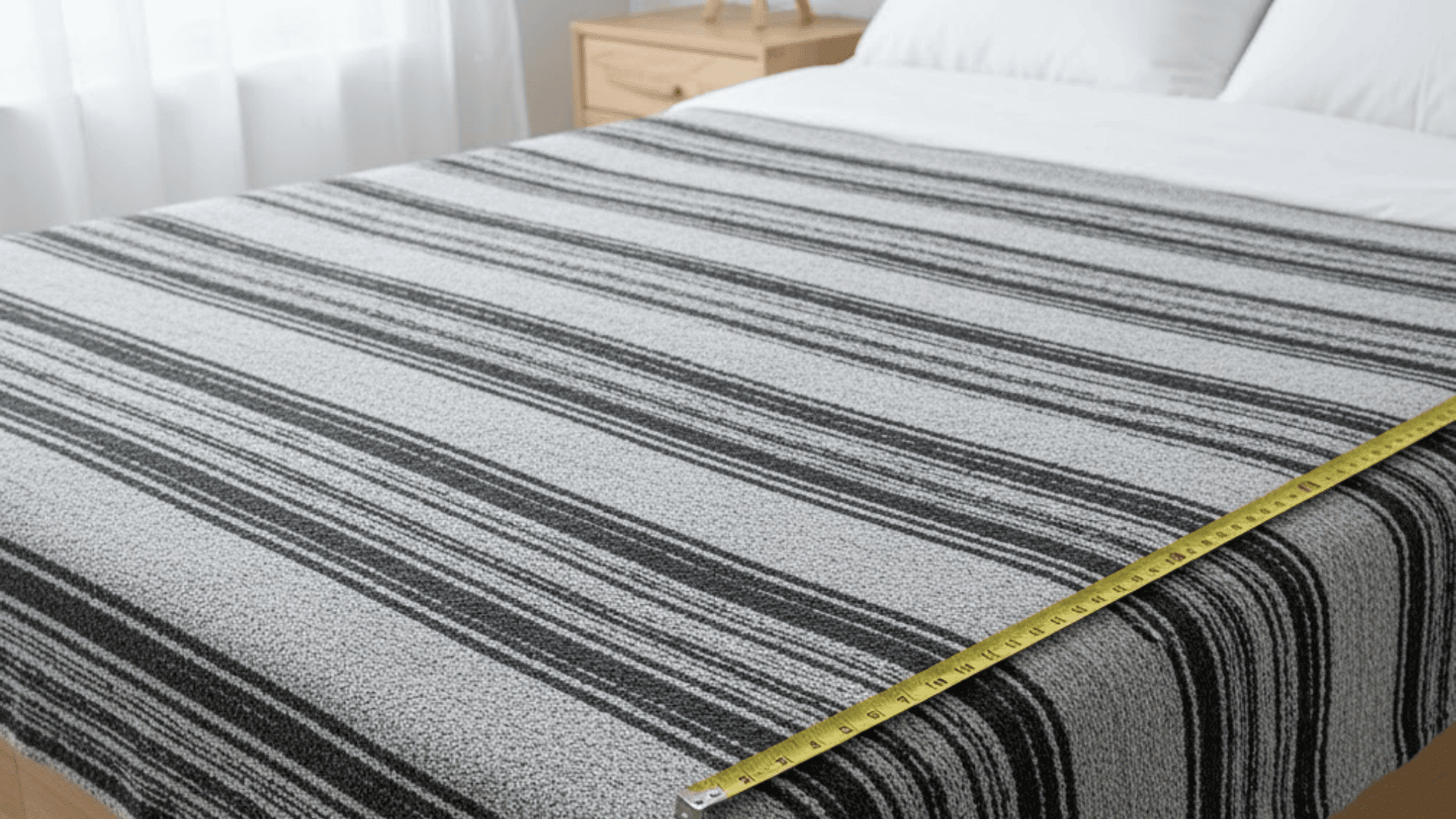I’ve often wondered, “How long do mattress toppers last?” especially when mine started losing its comfort. If you’ve noticed the same thing, it might be time to pay attention. A worn-out topper can impact your sleep quality, but knowing when to replace it isn’t always obvious.
Today, I’ll cover how long different types of mattress toppers usually last, the factors that affect their lifespan, and the signs it’s time for a new one. I’ll also share simple care tips that have helped me get more years out of mine.
By the end, you’ll know exactly how to keep your topper fresh and supportive, or if it’s time to find a replacement.
How Long Do Mattress Toppers Last?
Most mattress toppers don’t last forever. But how long they hold up depends on the material and how you use them.
On average, mattress toppers last between 3 to 5 years. With good care, higher-end toppers can last up to 10 or even 15 years.
Latex and hybrid toppers tend to last the longest. Cheaper options, such as basic foam, tend to wear out faster.
Many brands list their toppers’ lifespan in the product details. These are just estimates, though. Real-life durability can vary based on how often you use it and how well you take care of it.
What Affects the Lifespan of a Mattress Topper?

Several things decide how long your mattress topper will last. The material, how often you use it, and how you care for it all play a role.
Material Type
Different materials wear out at different speeds. Here’s a quick look at how each type holds up:
- Latex: Durable and firm. It can last 10–15 years with proper care.
- Memory foam: Soft and contouring. Lasts around 3–5 years, depending on density.
- Polyfoam: Less durable than memory foam. Tends to wear out in 2–4 years.
- Feather/down: Soft but compresses easily. Needs regular fluffing and lasts 2–3 years.
- Hybrid: A mix of materials. Offers balanced comfort and usually lasts 5–8 years.
If you want a topper that lasts longer, choose latex or a high-quality hybrid.
Usage Patterns
How often and how you use your topper affects how long it stays in good shape.
- Frequency: Toppers used every night will wear out faster than ones in a guest room.
- User weight or sleeping with a partner: A Heavier body weight or two people in bed can cause faster sagging.
- Pets on the bed: Pets add extra wear and tear, especially if they move around a lot or shed.
Daily use with added weight or movement shortens the topper’s life. Occasional use helps it last longer.
Maintenance Habits
Taking care of your topper can extend its lifespan by years.
- Cleaning methods: Spot-clean stains gently. Avoid soaking or using harsh chemicals.
- Use of a mattress protector: A waterproof or washable protector keeps dirt, sweat, and spills away.
- Rotating or flipping: Rotating your topper every few months helps even out pressure and wear.
Simple habits like cleaning and rotating can make a big difference. Protecting your topper keeps it fresher and firmer for longer.
Better Comfort and Extra Protection from Mattress Toppers
A mattress topper can quickly change how your bed feels without replacing the whole mattress. It adds a layer of comfort that can make a firm bed softer or give extra support where needed.
Different materials offer different benefits, such as memory foam cushions that pressure points, latex provides firmer support, and cooling toppers help with temperature control. This makes it easier to adjust your bed to match your sleep style.
Toppers also create a barrier that protects your mattress from sweat, oils, and dirt, helping it stay cleaner and last longer.
In short, a good topper improves sleep comfort and keeps your mattress in better shape.
Can a Mattress Topper Extend the Life of a Mattress?

A mattress topper can be a simple way to get more use out of your mattress, adding up to 2 or 3 extra years in some cases. It works by reducing direct pressure on the mattress, helping slow down wear and tear.
Toppers are especially useful when your bed feels too firm or lacks comfort. They offer added cushioning or support and are often used as a budget-friendly upgrade when a new mattress isn’t an option yet.
But there are limits. If your mattress is already sagging or worn out, a topper won’t restore proper support. In these cases, adding a topper may only cover the problem, not fix it.
Used correctly, a topper can help preserve your mattress a bit longer, as long as the base is still in good shape.
When to Replace a Mattress Topper
Mattress toppers wear out over time. Watch for these signs to know when it’s time to replace yours:
- Sagging or lumps: When your topper has uneven spots or soft patches, it means the material inside is breaking down. This reduces comfort and support.
- Visible indentations: Deep body impressions that stay after you get up show the foam or fill has lost its bounce. It can’t properly support your body anymore.
- Odors or stains: If your topper smells bad or has stains that won’t come out, moisture or bacteria may be trapped inside. This can affect sleep hygiene.
- Allergy flare-ups: A buildup of dust mites or allergens in older toppers can cause sneezing, itchy eyes, or breathing issues, especially for sensitive sleepers.
- Loss of support: If your topper feels flat or doesn’t ease pressure on your body, it’s no longer doing its job. This can lead to poor sleep posture.
- Back or neck pain: A worn-out topper may stop keeping your spine aligned. New aches and pains are a sign your body isn’t being supported well.
- Noisy or crinkly sound: If your topper makes odd sounds when you move, its inner materials could be damaged or worn. That’s often a sign it’s breaking down.
If you notice one or more of these issues, it’s probably time to replace your mattress topper for better comfort and support.
Conclusion
Now you’ve got a better sense of how long mattress toppers last and what really affects their lifespan. I’ve found that if you’re trying to make your mattress last longer or just want better sleep, picking the right topper and caring for it properly can make a big difference.
Use what you’ve learned to check if your current topper still holds up. A few simple changes in how you care for it can help it last longer and feel more comfortable.
And when comfort fades or signs of wear show up, it might be time for a new one.
If you’re looking for more easy tips on sleep and home choices, don’t forget to check out my other blogs on the website. I’ve got plenty to share.
Frequently Asked Questions
Can I wash a mattress topper in a washing machine?
Most mattress toppers, especially memory foam and latex, should not be machine-washed. Always check the care label; some fabric or fiberfill toppers may allow gentle-cycle washing.
How thick should a mattress topper be?
For comfort upgrades, look for toppers that are 2 to 4 inches thick. Thinner toppers add slight softness, while thicker ones offer more support and pressure relief.
Do mattress toppers help with back pain?
Yes, a good topper can ease back pain by improving spinal alignment and reducing pressure on joints, especially memory foam or latex options.









